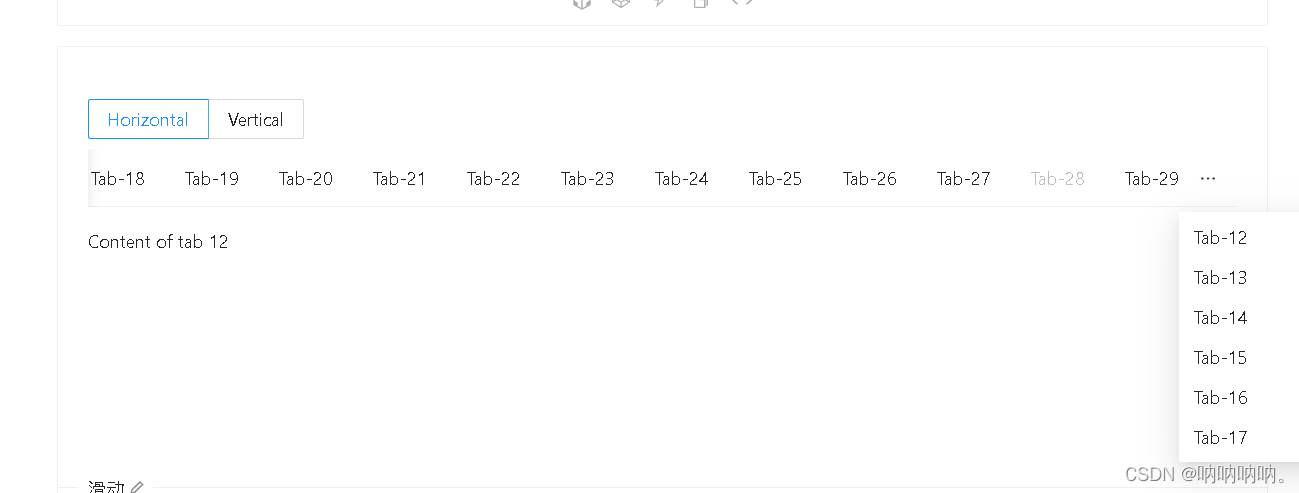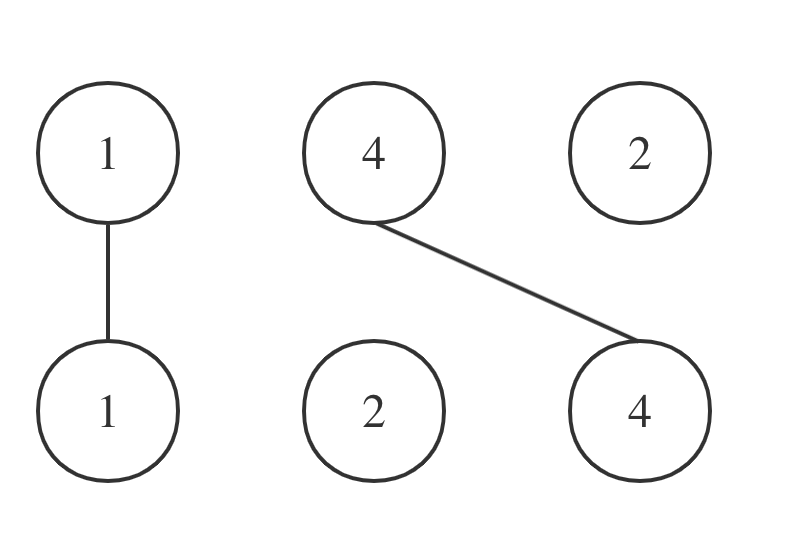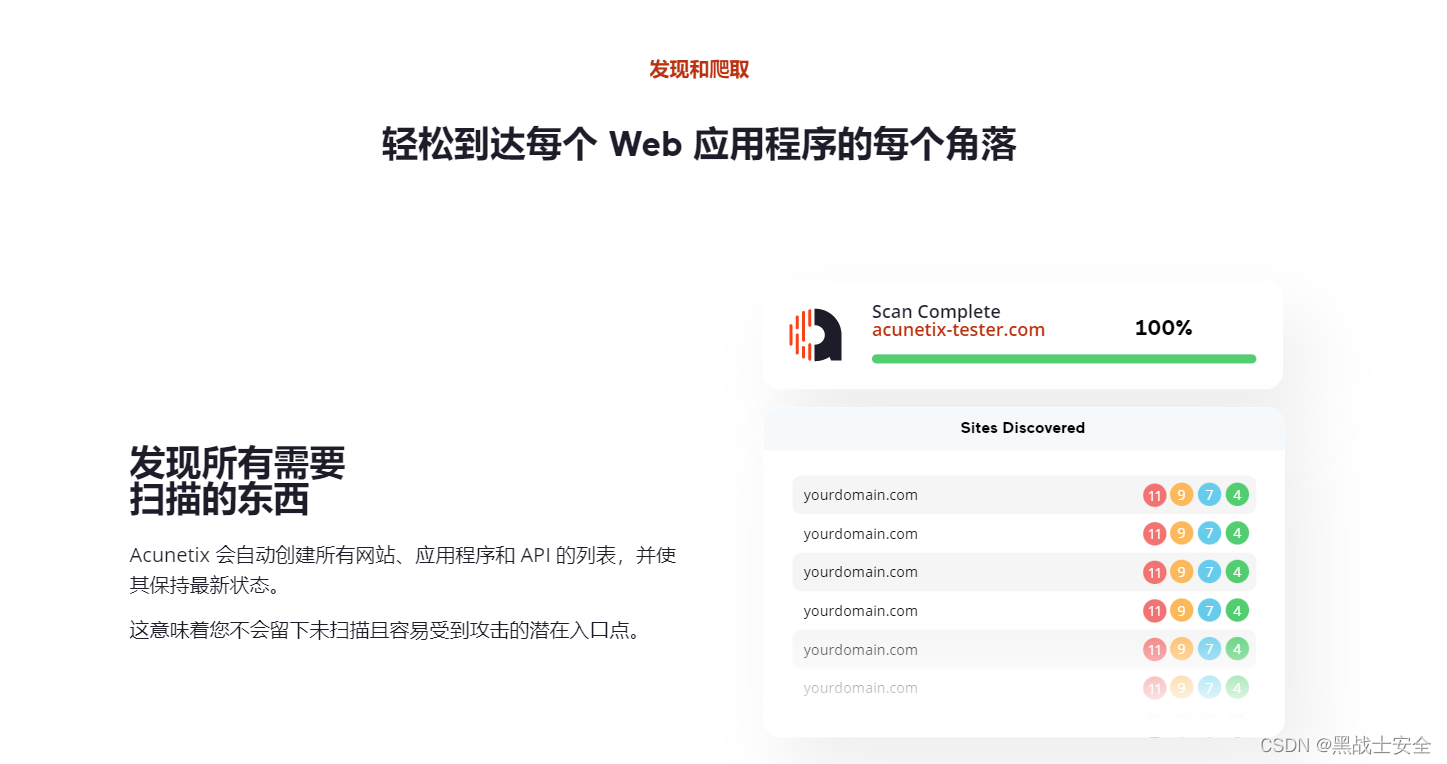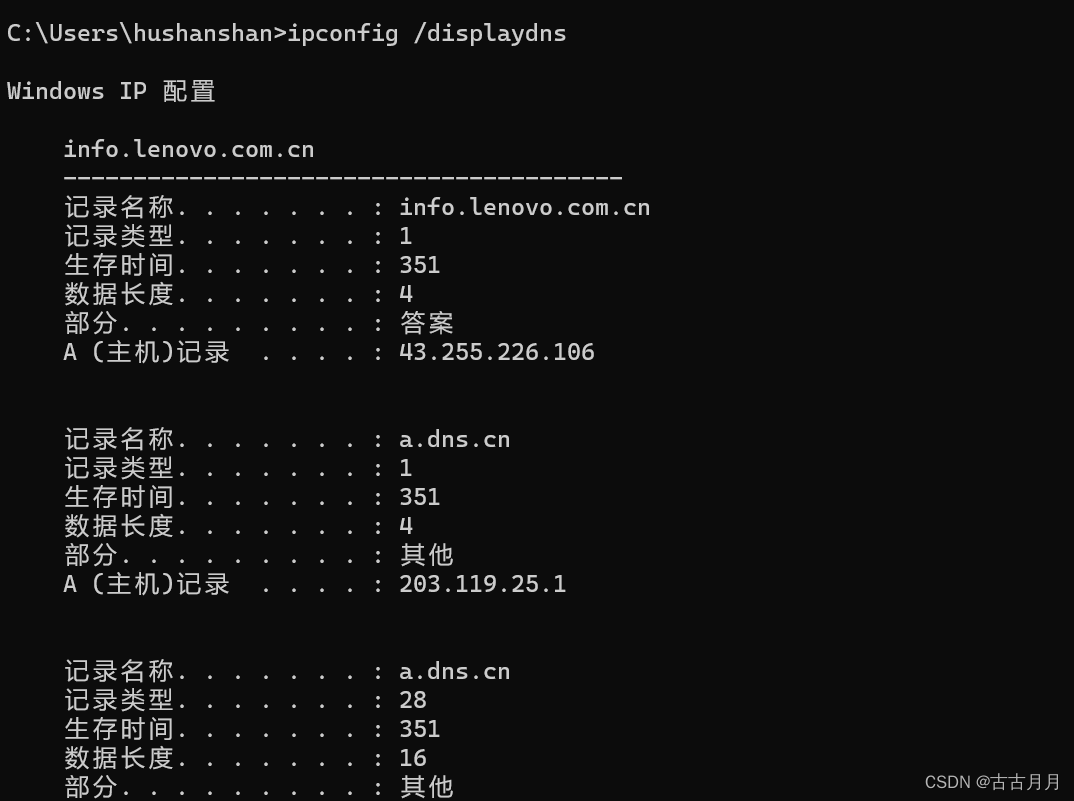一.基本概念:
一.基本结构:
1.逻辑结构:

二.结构体的基本组成。
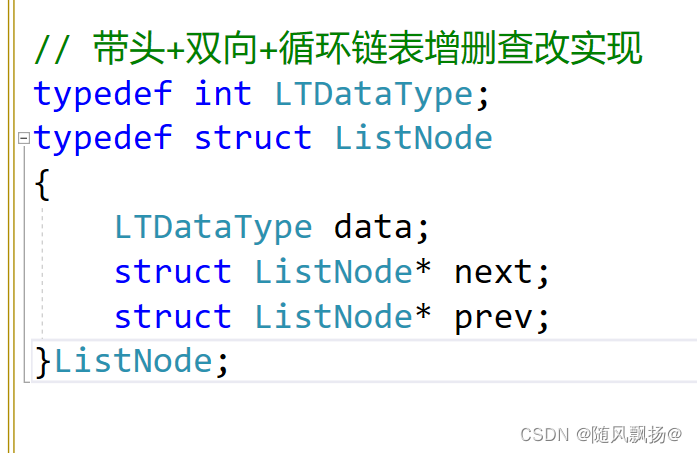
和单链表非常大的区别就是函数不需要传二级指针,因为头不存有效数据。头节点不需要改变。
二.功能接口的实现
0.创建一个新的节点
//创建新的节点
ListNode* buylistnode(int x)
{
ListNode* newhead = (ListNode*)malloc(sizeof(ListNode));
newhead->data = x;
newhead->next = NULL;
newhead->prev = NULL;
return newhead;
}
1.双向链表打印
void ListPrint(ListNode* pHead)
{
assert(pHead->next != NULL);
ListNode* cur = pHead->next;
while (cur!= pHead)
{
printf("<-%d->", cur->data);
cur = cur->next;
}
printf("\n");
}
2.双向链表尾插
// 双向链表尾插
void ListPushBack(ListNode* pHead, LTDataType x)
{
assert(pHead->next);
ListNode* newhead = buylistnode(x);
ListNode* tile = pHead->prev;
tile->next = newhead;
newhead->prev = tile;
newhead->next = pHead;
pHead->prev = newhead;
}
3.双向链表尾删
// 双向链表尾删
void ListPopBack(ListNode* pHead)
{
assert(pHead);
assert(pHead->next != NULL);
ListNode* tile = pHead->prev;
ListNode* prevtile = pHead->prev->prev;
free(tile);
tile->prev = NULL;
tile->next = NULL;
prevtile->next = pHead;
pHead->prev = prevtile;
}
4.双向链表头插
// 双向链表头插
void ListPushFront(ListNode* pHead, LTDataType x)
{
assert(pHead);
ListNode* newnode = buylistnode(x);
ListNode* next = pHead->next;
pHead->next = newnode;
newnode->prev = pHead;
newnode->next = next;
next->prev = newnode;
}
5.双向链表头删
// 双向链表头删
void ListPopFront(ListNode* pHead)
{
assert(pHead);
assert(pHead->next!= NULL);
ListNode* next = pHead->next->next;
ListNode* delnext = pHead->next;
free(delnext);
delnext = NULL;
pHead->next = next;
next->prev = pHead;
}
6.双向链表查找
// 双向链表查找
ListNode* ListFind(ListNode* pHead, LTDataType x)
{
assert(pHead);
assert(pHead->next != NULL);
ListNode* cur = pHead->next;
while (cur != pHead)
{
if (cur->data == x)
{
return cur;
}
cur = cur->next;
}
return NULL;
}
7.双向链表在pos的前面进行插入
// 双向链表在pos的前面进行插入
void ListInsert(ListNode* pos, LTDataType x)
{
ListNode* newnode = buylistnode(x);
ListNode* nextprev = pos->prev;
nextprev->next = newnode;
newnode->prev = nextprev;
newnode->next = pos;
pos->prev = newnode;
}
8.双向链表删除pos位置的节点
// 双向链表删除pos位置的节点
void ListErase(ListNode* pos)
{
assert(pos);
ListNode* prev = pos->prev;
ListNode* next = pos->next;
free(pos);
pos = NULL;
prev->next = next;
next->prev = prev;
}
9.双向链表销毁
// 双向链表销毁
void ListDestory(ListNode* pHead)
{
assert(pHead);
assert(pHead->next != NULL);
ListNode* cur = pHead->next;
while (cur != pHead)
{
ListNode* next = cur->next;
free(cur);
cur = NULL;
cur = next;
}
}
三.整体代码
#define _CRT_SECURE_NO_WARNINGS 1
#include"list.h"
// 双向链表销毁
void ListDestory(ListNode* pHead)
{
assert(pHead);
assert(pHead->next != NULL);
ListNode* cur = pHead->next;
while (cur != pHead)
{
ListNode* next = cur->next;
free(cur);
cur = NULL;
cur = next;
}
}
//创建新的节点
ListNode* buylistnode(int x)
{
ListNode* newhead = (ListNode*)malloc(sizeof(ListNode));
newhead->data = x;
newhead->next = NULL;
newhead->prev = NULL;
return newhead;
}
// 双向链表打印
void ListPrint(ListNode* pHead)
{
assert(pHead->next != NULL);
ListNode* cur = pHead->next;
while (cur!= pHead)
{
printf("<-%d->", cur->data);
cur = cur->next;
}
printf("NULL");
printf("\n");
}
// 双向链表尾插
void ListPushBack(ListNode* pHead, LTDataType x)
{
assert(pHead);
ListNode* newhead = buylistnode(x);
ListNode* tile = pHead->prev;
tile->next = newhead;
newhead->prev = tile;
newhead->next = pHead;
pHead->prev = newhead;
}
// 双向链表尾删
void ListPopBack(ListNode* pHead)
{
assert(pHead);
assert(pHead->next != NULL);
ListNode* tile = pHead->prev;
ListNode* prevtile = pHead->prev->prev;
free(tile);
tile = NULL;
prevtile->next = pHead;
pHead->prev = prevtile;
}
// 双向链表头插
void ListPushFront(ListNode* pHead, LTDataType x)
{
assert(pHead);
ListNode* newnode = buylistnode(x);
ListNode* next = pHead->next;
pHead->next = newnode;
newnode->prev = pHead;
newnode->next = next;
next->prev = newnode;
}
// 双向链表头删
void ListPopFront(ListNode* pHead)
{
assert(pHead);
assert(pHead->next!= NULL);
ListNode* next = pHead->next->next;
ListNode* delnext = pHead->next;
free(delnext);
delnext = NULL;
pHead->next = next;
next->prev = pHead;
}
// 双向链表查找
ListNode* ListFind(ListNode* pHead, LTDataType x)
{
assert(pHead);
assert(pHead->next != NULL);
ListNode* cur = pHead->next;
while (cur != pHead)
{
if (cur->data == x)
{
return cur;
}
cur = cur->next;
}
return NULL;
}
// 双向链表在pos的前面进行插入
void ListInsert(ListNode* pos, LTDataType x)
{
ListNode* newnode = buylistnode(x);
ListNode* nextprev = pos->prev;
nextprev->next = newnode;
newnode->prev = nextprev;
newnode->next = pos;
pos->prev = newnode;
}
// 双向链表删除pos位置的节点
void ListErase(ListNode* pos)
{
assert(pos);
ListNode* prev = pos->prev;
ListNode* next = pos->next;
free(pos);
pos = NULL;
prev->next = next;
next->prev = prev;
}
#define _CRT_SECURE_NO_WARNINGS 1
#include<stdio.h>
#include<stdlib.h>
#include<assert.h>
// 带头+双向+循环链表增删查改实现
typedef int LTDataType;
typedef struct ListNode
{
LTDataType data;
struct ListNode* next;
struct ListNode* prev;
}ListNode;
// 双向链表销毁
void ListDestory(ListNode* pHead);
// 双向链表打印
void ListPrint(ListNode* pHead);
// 双向链表尾插
void ListPushBack(ListNode* pHead, LTDataType x);
// 双向链表尾删
void ListPopBack(ListNode* pHead);
// 双向链表头插
void ListPushFront(ListNode* pHead, LTDataType x);
// 双向链表头删
void ListPopFront(ListNode* pHead);
// 双向链表查找
ListNode* ListFind(ListNode* pHead, LTDataType x);
// 双向链表在pos的前面进行插入
void ListInsert(ListNode* pos, LTDataType x);
// 双向链表删除pos位置的节点
void ListErase(ListNode* pos);
/
#define _CRT_SECURE_NO_WARNINGS 1
#include"list.h"
void text1()
{
ListNode* head = (ListNode*)malloc(sizeof(ListNode));
head->next = head;
head->prev = head;
ListPushBack(head, 1);
ListPushBack(head, 2);
ListPushBack(head, 3);
ListPushBack(head, 4);
ListPushBack(head, 5);
ListPrint(head);
ListPopBack(head);
ListPopBack(head);
ListPopBack(head);
ListPrint(head);
ListPushFront(head, 6);
ListPushFront(head, 7);
ListPushFront(head, 8);
ListPushFront(head, 9);
ListPrint(head);
ListPopFront(head);
ListPopFront(head);
ListPrint(head);
ListNode* del1 = ListFind(head, 6);
ListInsert(del1, 6);
ListNode* del2 = ListFind(head, 2);
ListInsert(del2, 1);
ListPrint(head);
del1 = ListFind(head, 6);
ListErase(del1);
del2 = ListFind(head, 2);
ListErase(del2);
ListPrint(head);
ListDestory(head);
ListPrint(head);
}
int main()
{
text1();
return 0;
}
今天的分享就到这里了谢谢大家的阅读,我会继续带来更加优质的文章!


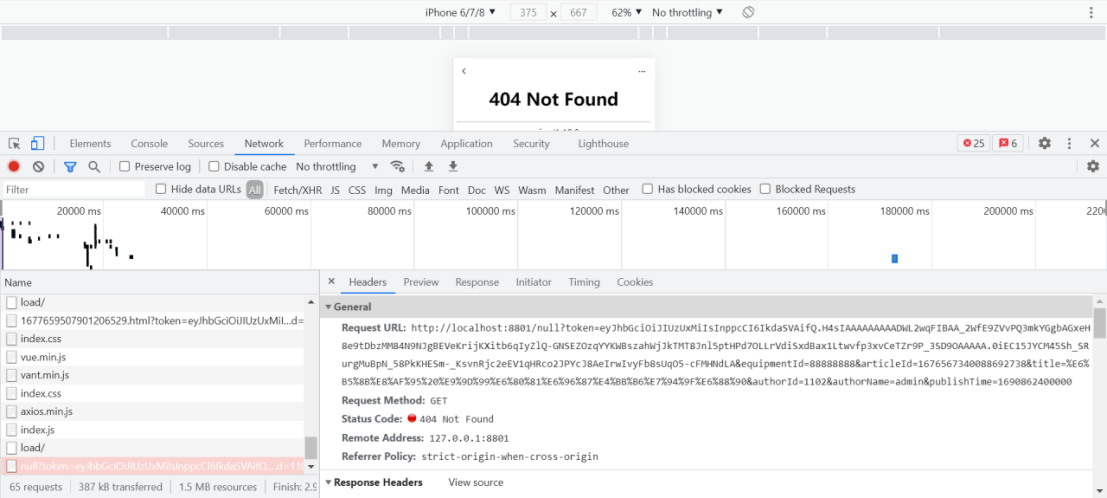





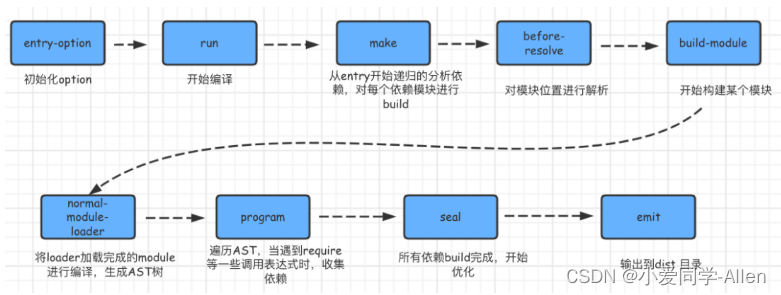
![[C++项目] Boost文档 站内搜索引擎(3): 建立文档及其关键字的正排 倒排索引、jieba库的安装与使用...](https://img-blog.csdnimg.cn/img_convert/fc0e861d01e0270ee1e9a3ad197899cc.png)

